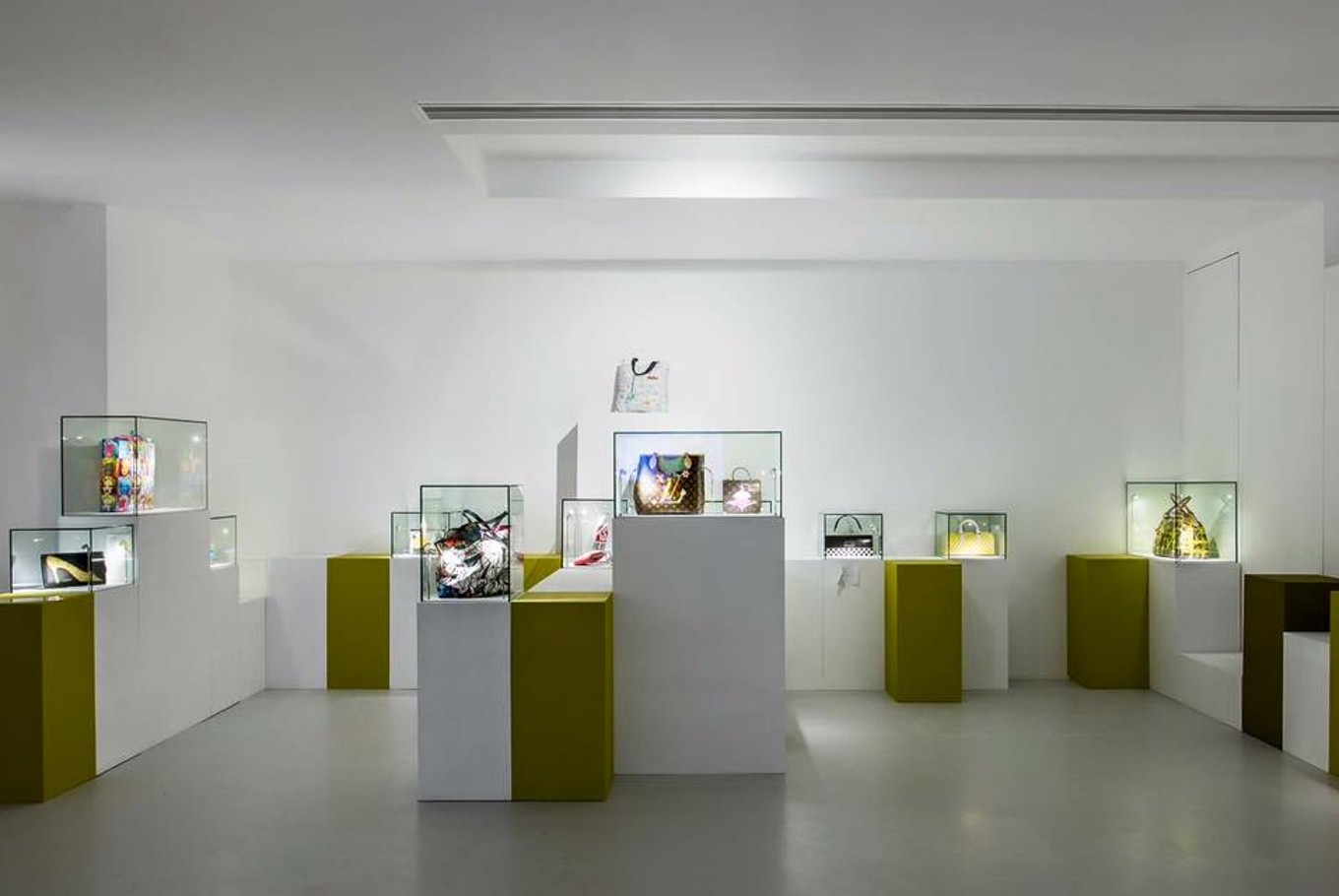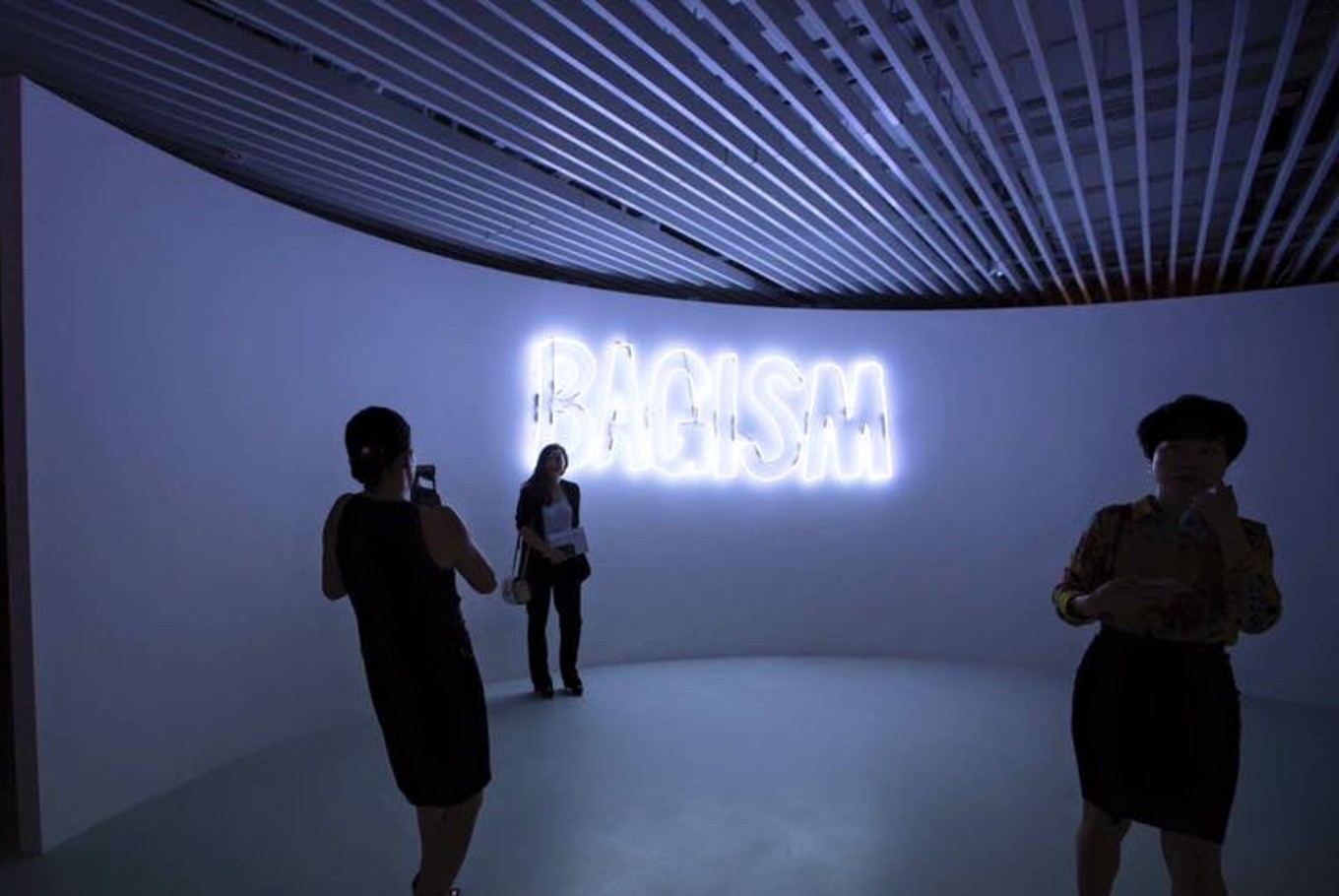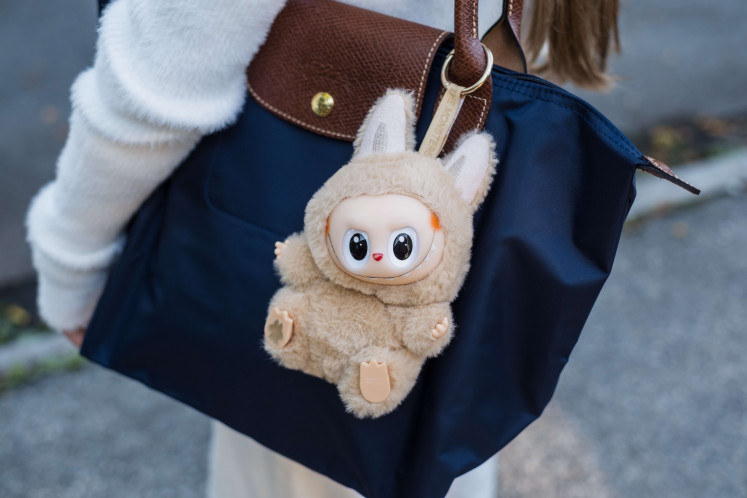Popular Reads
Top Results
Can't find what you're looking for?
View all search resultsPopular Reads
Top Results
Can't find what you're looking for?
View all search resultsHandbags mirror social change
Change text size
Gift Premium Articles
to Anyone
An ongoing display in Shanghai traces the evolution of this fashion accessory. Zhang Kun reports.
No other fashion accessory looks so colorful and has so many anecdotes about it as the handbag. An exhibition in Shanghai, at the chi K11 Art Museum, shows the handbag as a mirror of social change.
Bagism: We Are All in the Same Bag! is the first of its kind of crossover exhibition in China that features more than 300 handbags covering a time span of 400 years.
Besides antiques, historical pieces and iconic handbags designed, owned or created in memory of celebrities, the exhibition also features creations by 15 contemporary Chinese artists.
The handbag as an accessory only emerged in the 1600s, at the beginning of the Renaissance, says Elisabeth Azoulay, the French curator, who put together the exhibition especially for the chi K11 Art Museum, borrowing handbags from more than 70 museums and private collections worldwide, including the Musee des Arts Decoratifs in Paris, Palais Princier de Monaco and the Simone Handbag Museum of Seoul. Luxury houses such as Louis Vuitton, Chanel and Hermes have also contributed to the show.
"Aristocratic people wanted to keep their secrets," says Azoulay speaking about the origin of the handbag.
She says there were political letters, love letters and so on, which they wanted to keep from the eyes of others. "Intimacy and secrets - that's what the handbag was for."
Azoulay says early handbags were made of fine fabric, with lots of embroidery, jewelry, lace and other decorations, reflecting the wealth and status of their owners. After the French Revolution, she says, everyone became equal citizens, and men's fashion turned simple, with pockets sewn and integrated into their garments. After that, the handbag remained an accessory for women.
Taking the story further, she says that as the world stepped into the modern age, women no longer wore much jewelry, hats or gloves nor did they hide themselves behind fans or umbrellas. So, the handbag is a "survivor of the period".
Azoulay says the emancipation of women brought them into the job market and the growing mobility resulted in more demand for the handbag.
Tracing the recent history of the handbag, Azoulay says Coco Chanel was the first to name a handbag that she designed in 1955.
The bag "2.55" was named after the month and year in which it was created, when Chanel was 72 years old, she says.
Speaking of the materials used to make handbags, Azoulay says leather, a more firm and durable material compared with silk and other fabrics, was not used to make handbags until the early 20th century.
In fact, Chanel ingeniously made her signature bag using quilted leather and used lambskin like a fabric. It was inspired by the jackets worn by stable lads and stained glass windows near her convent school.
 "Bagism: We Are All in the Same Bag!" shows the handbag as a mirror of social change. (facebook.com/k11ArtMall/-)
"Bagism: We Are All in the Same Bag!" shows the handbag as a mirror of social change. (facebook.com/k11ArtMall/-)
(Read also: 6 local quirky bag brands on the rise)
Azoulay says more iconic bags appeared later, often named after royals or celebrities, such as the Kelly bag, named after Grace Kelly, the Hollywood star and princess of Monaco.
Referring to the past few decades, Azoulay says as fashion turned more unisex and simple, featuring less color or decorations, the handbag became a piece that demonstrated the carrier's social status, fashion tastes and style choices.
That's why luxury fashion brands launched their signature pieces, known as the "IT" bags, often bearing large logos, she says.
"You can give people a good impression with a nice bag, even if you wear cheap clothes," says the curator.
Then, as handbags became more expressive and demonstrative, new possibilities arose, says Azoulay, and artists participated in designing handbags - from surrealist master Salvador Dali to acclaimed architect Zaha Hadid.
Their creations are found among the exhibits, as well as a bag used by Queen Elizabeth II.
While vintage, historic and name-brand bags are showcased on the right side of the exhibition hall, contemporary artists' works are featured on the left.
It was Chinese curator Penny Liu who has put together the contemporary bags display for the exhibition.
The word "Bagism" - the name of the exhibition - was coined by pop legend John Lennon and his wife Yoko Ono as part of their extensive peace campaign in the late 1960s.
The celebrity couple had then wrapped themselves in a white sheet, with the word "Bagism" written on it.
With their clothes and all other things removed, the couple called on people to take each other's ideas more seriously, so as to achieve "total communication", says Liu.
Liu adds that by choosing the word as the name for the exhibition, she wanted to address the social and cultural significance of bags.
Among the contemporary artists featured in the exhibition are Zhang Enli and Xu Zhen, as well as young talents such as Pixie Liao and Peng Wei.
The artists have worked through various media and styles, projecting the handbag as a vessel for desire, a metaphor for the human existence, as well as projection of values and ideas.
Speaking of the exhibition, Adrian Cheng, the founder of the K11 Art Mall, says: It will lead the trend for crossover shows of fashion and art.
"We hope that through this exhibition, people will get inspired to know more and talk more about the concept of art, the history of fashion designing, and see the relationship between the two, and how it inspires Chinese contemporary artists and society."











